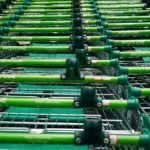SWOT analysis of Marks and Spencer (M&S)
This is a detailed SWOT analysis of Marks and Spencer (M&S). It aims to examine the strengths and the weaknesses of the retailer. It also examines the opportunities that it should explore and the threats that it should keep an eye on. M&S is a leading British retailer, headquartered in London.
Strengths of Marks and Spencer (M&S)
Market experience
Marks and Spencer is one of the top retailers in the UK. It started its journey as a Penny Bazaar at Leeds Kirkgate Market in the UK in 1884 (Marks and Spencer, 2022). It works with a number of big partners in the UK and abroad. Its enormous market experience is certainly a great strength.
Brand recognition
Marks and Spencer has a great reputation for the quality of its products. It is a premium supermarket and is one of the best for in-store shopping in the UK according to a survey conducted by Which? (Which? 2022). It is worth mentioning that thousands of people usually take part in any Which? Survey.
International presence
Marks and Spencer has stores and online presence in a number of countries across Europe, the Middle East and Asia. It has over 1500 stores globally. Its own-brand clothing and homeware are sold through many full-line stores, outlets and M&S.com website (Marks and Spencer, 2022). This large number of stores, outlets, and the website has helped the company make the business wider.
Focus on sustainability
Marks and Spencer has a strong emphasis on sustainability and social responsibility which set it apart from other retailers. It has met some key milestones over the years. For instance, it is the first UK retailer to introduce carrier bag charging which has reduced the usage by 90%. Its zero waste to landfill, 100% responsibly sourced sea fish, and carbon neutral operations are some other examples of how it is conducting a socially responsible corporate behaviour (Marks and Spencer, 2022).
Weaknesses of Marks and Spencer (M&S)
Sales decline
Marks and Spencer reported slumps in sales in the last several years. It suffered a £201.2 million annual loss as clothing and homeware sales fell sharply due to lockdowns and other challenges (Chapman, 2021). This had an enormous impact on the company. It has planned to close 30 more stores over the next decade.
Public perception
Many people think that Marks and Spencer does not much cater for teenagers and young people. The company is for older people and not very trendy. This perception has caused a lot of problems for Marks and Spencer. However, it is worth mentioning that although this perception is somewhat harsh, it is also true that a lot of Marks and Spencer’s customers are older citizens. According to some analysts click and collect, which is very popular with other retailers, is not very popular with M&S customers as many of them tend to be older and less keen on that option.
Opportunities for Marks and Spencer (M&S)
International expansion
Marks and Spencer has already reached some of the biggest countries in the world e.g. Russia, India, & Indonesia. However, exploring expansion opportunities in other big economies (e.g. Brazil & Poland) is worth the effort.
Online opportunities
Marks and Spencer’s online presence is good. However, it is falling behind other big retailers in the UK. There are some good online growth opportunities which it should pursue. In fact, it has recently revealed its plan to move a significant portion of clothing and home sales online for a digital-first future.
Threats to Marks and Spencer (M&S)
Competition
Marks and Spencer faces some great competitors both in the UK and abroad. For example, Tesco, ASDA, Sainsbury’s, Morrisons, Next, Gap, Sports Direct, Debenhams, John Lewis and Amazon are some of the biggest competitors of Marks and Spencer. Competition is so fierce that Marks and Spencer faces a big threat of losing its scope in the business. Due to a fierce competition and other factors, it is scaling down its operations globally. In fact, it has already pulled out of China, and closed a number of stores in France and the UK.
Fines and other challenges
Marks and Spencer was fined millions of pounds over several issues in the past. Therefore, it needs to ensure that it is abiding by rules and regulations appropriately. Similarly, more lockdowns and other disasters may also affect it badly.
Conclusion
It is thus clear that Marks and Spencer has several strengths as well as weaknesses. In a highly competitive economy, it is important for every business to understand its strengths, weaknesses, opportunities, and threats. Without this understanding, it would be difficult to develop the necessary improvements to contend with challenges.
We hope the article on the ‘SWOT analysis of Marks and Spencer (M&S)’ has been helpful. You may also like reading Marketing mix of Marks and Spencer (M&S). If you have liked the article, please share it with others to support our work.
Some more relevant articles for you:
Stakeholders of ASDA (An analysis of ASDA’s stakeholders)
Last update: 11 February 2022
References:
Chapman, B. (2021) Marks & Spencer to close 30 stores after slumping to £201m loss, available at: https://www.independent.co.uk/news/business/marks-and-spencer-sales-results-loss-b1854047.html (accessed 10 February 2022)
Marks and Spencer (2022) About us, available at: https://corporate.marksandspencer.com/aboutus/our-heritage (Accessed 11 February 2022)
Which? (2021) The best and worst supermarkets compared, available at: https://www.which.co.uk/reviews/supermarkets/article/best-and-worst-supermarkets/supermarkets-compared-aOJjN2J0A10N (Accessed 11 February 2022)
Photo credit: Metro
Author: M Rahman
M Rahman writes extensively online and offline with an emphasis on business management, marketing, and tourism. He is a lecturer in Management and Marketing. He holds an MSc in Tourism & Hospitality from the University of Sunderland. Also, graduated from Leeds Metropolitan University with a BA in Business & Management Studies and completed a DTLLS (Diploma in Teaching in the Life-Long Learning Sector) from London South Bank University.


